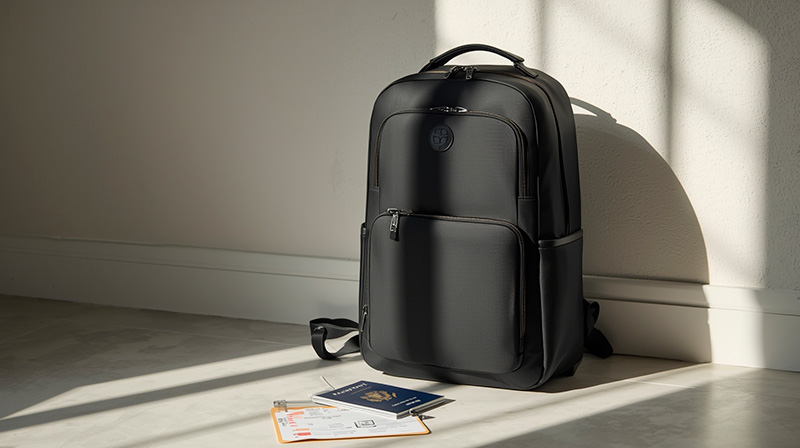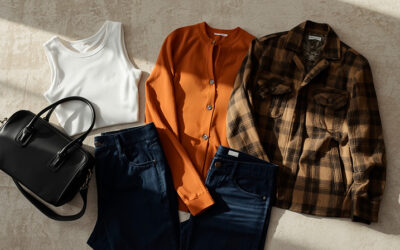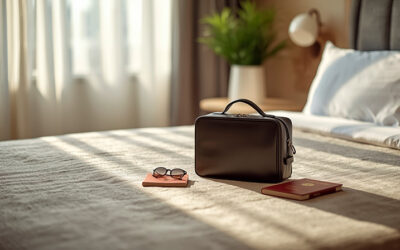Packing a week’s worth of essentials into a single backpack sounds like magic. But for minimalist travelers, it’s not only possible—it’s a lifestyle. Forget checking luggage, dragging heavy suitcases through cobblestone streets, or worrying about baggage fees eating into your travel budget.
With the right strategy, your backpack can hold everything you need for seven days of adventures while keeping you nimble, stress-free, and ready to catch that last-minute train or flight.
The secret isn’t about cramming more stuff into less space—it’s about traveling smarter. It’s about understanding what you truly need versus what you think you might need. It’s about choosing versatile pieces that work in multiple scenarios and learning to embrace the freedom that comes with carrying less.
In this article, we’ll break down the step-by-step process to pack smarter—without feeling like you’re leaving half your life behind. Whether you’re exploring European cities, trekking through Southeast Asia, or hopping between weekend destinations, these strategies will transform how you travel.
Step 1: Choose the Right Backpack
Not all backpacks are created equal, and choosing the right one is the foundation of successful minimalist packing. Look for one that’s:
- 35–40 liters (the perfect balance between space and carry-on limits for most airlines)
- Lightweight yet durable (under 3 pounds when empty)
- Designed with compartments to separate clothes from toiletries and electronics
- Opens like a suitcase rather than top-loading only (makes packing and finding items infinitely easier)
Consider features like padded shoulder straps, a hip belt for weight distribution, and water-resistant material. Brands like Osprey, Tortuga, and Nomatic offer excellent options specifically designed for one-bag travel. Remember: your backpack is an investment in comfort and convenience for years of adventures.
Step 2: Create a Packing List (and Cut It in Half)
Here’s where most travelers go wrong. They pack for possibilities instead of probabilities. The golden rule: you don’t need as much as you think.
Start by writing down everything you believe you’ll need. Then go through it with brutal honesty. Ask yourself:
- Have I worn this on my last three trips?
- Can another item serve the same purpose?
- Am I packing this «just in case»?
Seven days doesn’t mean seven different outfits. You’re not attending a fashion show every day—you’re traveling, exploring, and creating memories. Most people pack for two weeks when planning a seven-day trip. Cut that impulse in half, then cut it again.
Step 3: Stick to a Capsule Wardrobe
A capsule wardrobe is the minimalist traveler’s superpower. The concept is simple but revolutionary: pack items that can mix and match seamlessly, creating multiple outfits from minimal pieces.
Here’s the formula:
- 3 tops (mix of short and long sleeves depending on climate)
- 2 bottoms (pants, shorts, or skirts that coordinate with all tops)
- 1 jacket or layering piece (versatile enough for cool evenings or air-conditioned spaces)
- 1–2 pairs of shoes (more on this later)
- 7 pairs of underwear and socks (the one thing you should have enough of)
The math is beautiful: 3 tops × 2 bottoms = 6 different outfit combinations. Add your jacket for variety, and suddenly you have options without the weight.
Color strategy matters. Stick to a neutral base palette—black, navy, gray, or khaki. These colors hide stains better, match everything, and transition from day to night effortlessly. You can add one accent color if you want personality without sacrificing versatility.
Choose fabrics wisely. Merino wool is legendary among minimalist travelers because it’s naturally odor-resistant, moisture-wicking, and can be worn multiple times between washes. Synthetic quick-dry fabrics are equally valuable, especially in humid climates.
Step 4: Master Rolling & Compression
The difference between a chaotic backpack and an organized one often comes down to technique. Rolling clothes tightly saves space and reduces wrinkles—two wins in one motion.
Here’s the proper rolling technique:
- Lay the item flat and smooth out wrinkles
- Fold sleeves or sides inward
- Roll tightly from bottom to top
- Secure with rubber bands if needed
Take it further with compression packing cubes. These game-changing organizers use zippers to compress your clothes by 30-50%, creating remarkable space savings. The organizational benefits are equally valuable—one cube for shirts, one for pants, one for underwear. No more digging through your entire pack to find a single sock.
Packing cubes also keep clean clothes separate from worn items during your trip, making laundry decisions easier and preventing that «everything smells like everything else» phenomenon.
Step 5: Minimize Toiletries
Toiletries are where amateur packers lose precious space and add unnecessary weight. Liquids are bulky, prone to spills (especially with cabin pressure changes), and subject to strict airport restrictions.
The minimalist approach:
- Solid shampoo and conditioner bars (last longer than bottles and have zero spill risk)
- Compact soap dish with drainage (keeps your bar soap dry and your bag clean)
- Toothbrush in a protective case (hygiene and space-saving in one)
- Multi-purpose items (like a moisturizer with SPF)
- Tiny containers (3ml is often enough for a week)
Consider what’s available at your destination. Most hotels provide basic toiletries, and you can buy toothpaste or sunscreen almost anywhere in the world. You don’t need to pack full-size versions of everything «just in case.»
The reality is that travel-size toiletries have gotten remarkably sophisticated. Solid versions of almost everything now exist—deodorant, face wash, even makeup remover.
💡 For a smarter way to carry your soap and toothbrush, discover the CleanTrip Gear Kit here.
Step 6: Shoes – The Rule of Two
Shoes are the ultimate space-killers in any backpack. They’re bulky, awkwardly shaped, and heavy. This is where discipline pays off.
Limit yourself to two pairs maximum:
- Walking shoes or sneakers (your workhorses—comfortable enough for 10+ miles of daily exploration)
- A casual second pair (sandals, slip-ons, or dressier shoes depending on your itinerary)
Choose your walking shoes carefully. They should be broken in, supportive, and appropriate for your destination’s terrain and weather. Waterproof is worth the investment if you’re traveling in rainy seasons.
The airplane hack: Wear your bulkier pair on the plane to save precious backpack space. Your feet might be slightly less comfortable during the flight, but the space savings are worth it.
If you’re going somewhere that requires specific footwear (hiking boots, water shoes), you’ll need to get creative or accept that you might need to check a bag for that trip.
Step 7: Multi-Use Items Win
The minimalist traveler’s mantra: if it only does one thing, it doesn’t deserve space in your pack.
Choose gear that pulls double duty:
- Scarf → blanket on cold planes, beach cover-up, or fashion accessory
- Jacket → pillow when rolled, extra seat cushion, or daypack cover in light rain
- Sarong or large towel → beach blanket, curtain for hostel privacy, picnic spread, or emergency clothing item
- Travel hygiene kit → useful at the hotel, camping, gym, or long train rides
This mindset extends to technology too. A smartphone with a good camera eliminates the need for a separate camera for most travelers. Kindle apps replace physical books. One universal adapter beats carrying multiple country-specific ones.
Step 8: Laundry on the Go
Here’s the secret that separates weekend packers from week-long minimalists: embrace laundry.
For longer trips, plan to do laundry mid-week. This isn’t a compromise—it’s liberation. It means you can pack for 3-4 days and simply refresh everything at the halfway point.
Quick-dry fabrics are your best friend. Merino wool and synthetic materials can be washed in a sink, wrung out in a towel, and hung overnight. By morning, they’re ready to wear. Some travelers even wash items in the shower while they’re bathing, maximizing efficiency.
Many accommodations have laundry facilities or services. A $5-10 laundry service can save you from packing double the clothes. In hostels, coin-operated machines are common. Even without facilities, hotel sinks work perfectly fine with a small amount of travel detergent.
The environmental benefit is real too—traveling with less means less laundry overall, reducing your trip’s carbon footprint.
Step 9: Use Dead Space Wisely
Expert packers see opportunities where amateurs see limitations. Every cubic inch of your backpack has potential.
Strategic space utilization:
- Stuff socks or chargers inside shoes (shoes are going in anyway—fill them)
- Keep cables in sunglass cases (prevents tangling and protects delicate sunglasses)
- Roll belts around the inside perimeter (creates structure while using edge space)
- Nestle toiletry bottles in gaps between larger items
- Compress puffy jackets last (they can fill irregular spaces at the top)
This tetris-style packing takes practice, but it becomes second nature. You’ll find yourself naturally identifying nooks and crannies that can hold one more small item.
Step 10: Leave a Little Room
Here’s counterintuitive advice: don’t max out your backpack on day one.
Leave 15-20% empty space for several smart reasons:
- Souvenirs and discoveries (that perfect artisan item you find in a local market)
- Snacks for travel days (nothing worse than being hungry at an airport with no space for food)
- Climate surprises (you might need to buy a warmer layer than expected)
- Expansion room (as you wear items, they compress differently; fresh space helps)
The best trips often surprise you. Building in flexibility means you can say yes to unexpected opportunities without logistical gymnastics.
Sample One-Week Backpack Packing List
Clothes
- 3 T-shirts (mix of short and long sleeve)
- 2 pairs of pants/shorts (versatile, quick-dry fabric)
- 1 jacket or layering piece
- 1–2 pairs of shoes
- 7 pairs of underwear & socks
- 1 swimsuit (if relevant to destination)
Toiletries
- Solid shampoo bar
- Soap in travel dish
- Toothbrush + protective case
- Minimal skincare (small containers or solid versions)
- Deodorant (solid stick)
- Sunscreen (small tube)
- Medications and first aid basics
Tech & Extras
- Laptop/tablet (if needed for work)
- Phone and chargers
- Universal adapter
- Portable power bank
- Lightweight quick-dry towel
- Reusable water bottle
- CleanTrip Gear hygiene kit
- Small daypack (foldable)
Documents
- Passport and copies
- Travel insurance details
- Credit cards and minimal cash
- Accommodation confirmations (digital is fine)
Packing a week’s worth of essentials into a backpack is not about squeezing—it’s about strategy, intention, and embracing a lighter way to travel. With a capsule wardrobe, smart toiletries, compression techniques, and a focus on multipurpose gear, your minimalist backpack becomes your ticket to freedom.
The benefits extend far beyond just fitting everything in. You’ll move faster through airports, save money on baggage fees, reduce decision fatigue about what to wear, and experience a genuine sense of liberation that comes with carrying everything you need on your back.
You’ll never worry about lost luggage again. You’ll never wait at a baggage carousel. You’ll never drag a suitcase up four flights of stairs in a European walk-up. Instead, you’ll be nimble, flexible, and ready for whatever adventure comes next.
Start with your next weekend trip. Practice these techniques. Adjust based on what you actually use versus what sits untouched. Over time, you’ll discover your personal perfect packing formula—and once you do, you’ll never want to travel any other way.
💡 For a smarter way to carry your soap and toothbrush, discover the CleanTrip Gear Kit here.








0 comentarios